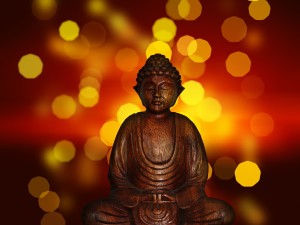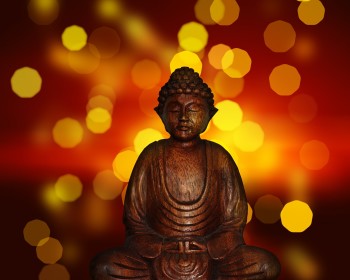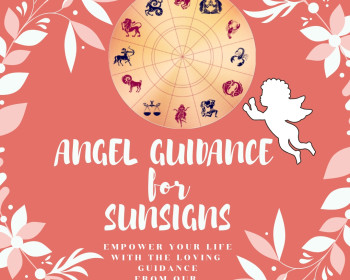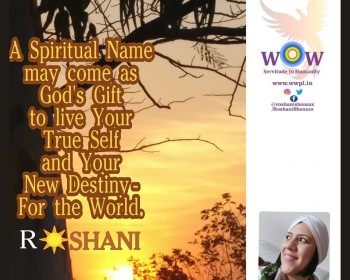
Holistic Intervention and How It Impacts Us
Understanding the Word ‘Holistic’
It is difficult to explain a concept that we all already know; what is even more difficult is to underline its significance. While the word ‘holistic’ is fairly common in usage, its true meaning is somewhat forgotten or neglected. The opposite of isolated, a holistic approach is essentially about taking into consideration an integrated understanding of things. It is about viewing life through the following three lenses: the physical—that which comprises our body and its related activities, the mental—that which comprises our thoughts, beliefs, actions, and responses, and the spiritual—that which comprises the sum total of our understanding of the world and the purpose of our life. Having said this, how many of us really pause to think and evaluate our lives if we are running a temperature or are facing a bout of depression? In such situations, do we measure the quality of our thoughts, beliefs, action, and responses or do we take medicines to supress the ailment? Luckily for us today, conventional medicine is increasingly appropriating ‘holistic’ or an integrated approach to treatment and diagnosis and is, therefore, paying due attention to the mind–body nexus in the course of its treatment.
Understanding the Concept—‘Wellbeing’
I want to specifically mention here that I have always believed that all such new age holistic therapies are not to be called as ‘alternative’ therapies but rather ‘inclusive’ or ‘complimenting’ therapies as at many levels they are ‘not an alternative’ to conventional medicine and science but rather supporters and accelerators of overall healing and wellbeing of the person. To me and many other practitioners of new-age alternative therapies, the word ‘wellbeing’ is more inclusive in its sweep and includes broader structures of health and happiness. In my experience, I have come to realize that people view happiness as a by-product of good health and not the other way around. Happiness, it seems, is dependent on good health or monetary status, or any other status symbol like marriage, success etc. and as a result it comes and goes. With holistic intervention, we come to understand that happiness is an innate product within each of us and it’s important correlation with positive thinking and the impact it has on the mind, body and spirit. In other words, it is the inner spirit that feels and emotes, which the mind then picks up and influences the body. So if the mind and spirit is well looked after, the body has no choice but to manifest good health. Wellbeing also includes awareness of the thoughts and beliefs that fuel our actions and responses. It involves being mindful of the things that impact us and being in control of the things that we absorb at the subconscious level.
The Conscious Mind, the Subconscious Mind and the Unconscious Mind
In my journey as a practitioner, I have seen how little we know about the subconscious and the unconscious mind. Many do not even know the existence of the unconscious mind. The unconscious mind is the depository of all our information, mental imprints (Sanskaras), and karma across all lifetimes. It is not an easily accessible treasury in its large sense and should be avoided to tamper or dabble with unless really needed and under the protective guidance of a good genuine therapist. Comprising more than 90 per cent of our brain activity, this subconscious domain is vastly neglected as the conscious mind gains precedence, especially because we spend our longer waking hours with it. What we don’t realize is that the subconscious mind stays with us round the clock, fully coming in to play as we sleep. But this does not mean that we do not have any control over it. It does not mean that it is a deep dark place where we must not go. On the contrary; this, in fact, means that we have a chance of monitoring what affects us the most and the ways in which we call draw upon our resources to manifest signs of holistic wellness. What we hear, that which we see, the things we tell ourselves are the coordinates of the person we are and the key to who we want to be. If we repeat to ourselves with complete belief in all three zones of the mind, body and spirit that we are confident, we shall be so.
Surely we’ve all heard that ‘little voice’ in our head urging us to take that investment risk or to be extra careful while driving to work on a busy morning. Call it a gut feeling or an intuition, this voice is the voice of the subconscious drawing upon its vast knowledge and offering guidance in our daily lives. Why is it that students—those who tell themselves or believe that they are confident of their preparations—perform better than most others? Why is it that before an interview, professionals often focus on their confidence level the most? Those vying for top roles in their organizations wish to exude a certain vibe; why is proof of experience on papers not enough? Why is it necessary to feel the part before we play it? The answer is as simple and one that we have often given and received—it is all in the mind. Any action is preceded by a thought and we can very well control what we think and believe. In my book “Angels Speak” there is an in depth explanation on how the entire M-B-S System works and affects our outer reality.
The Impacts of Holistic Intervention
Our body and well being are consequences of how we think, feel, speak (outwardly or inwardly) and act. To view an illness holistically and to go to its source for its treatment is far more important, effective, and long-lasting as compared to treating it in isolation as an affected body part. Most of the times the resolve is unreached because we are attacking the symptom and not the cause. Example having fever is the symptom that the body is reflecting due to some unknown physically manifested reason and cause that lies within. But what lies deeper within that ailing physical organ or part is what we gain from a holistic insight, intuitive guidance and other approaches.

Clearly this is not enough. If an organ is malfunctioning, it still belongs to the larger constitution of the body and cannot be treated permanently if the body is not understood as a whole. The source can be a thought or something which we may have heard and, in turn, absorbed subconsciously. Using this modality, treatment that is offered includes a holistic understanding of who we are and what comprises our mental make-up. It takes in to account our surroundings and how we think and feel about it.
Given the kind of demanding lives we lead, many of us suffer in silence as often it is not a physical ailment with which we are struggling, although it can eventually become one, migraines, headaches and sleeplessness being the most common amongst these. Given this, it is more necessary now than ever to pay close attention to the things that we see, hear, speak feel, and believe. Our bodies are and can be what we would like it to be; our minds can be calm if we will it to be. Wellness, like everything else, first symptomatically manifests in the mind.
Thus was born my trademarked term of ‘WHOLEistic Living’. When we become ‘WHOLE’ and integrated in every sense, realizing the holistic interconnectedness and interdependence of our own existence in co-relation with everything around us, then we move towards what I call it as a successful ‘WHOLEistic Living.’
The key to it all is, if we ‘mind’ our ‘mind’ the ‘monkey mind’ as I often refer it as, then we allow the ‘higher mind’ to take over our lives as a whole!
And keeping that in mind, I sign-off on a lighter note, just like we did, when I worked with Channel V some 2 decades back – “Mind It!”
Stay Blessed Keep Shining!
Roshani/2017
Stay Blessed 🌟 Keep Shining
#holistic #wellness #wellbeing #wholeisticliving #mbssystem #mindbodyspirit
#roshanishenazz #empoweringyourlife #switchontheinnerlight #loveandlivegod
~ www.facebook.com/RoshaniShenazz
Instagram / Twitter – @roshanishenazz



